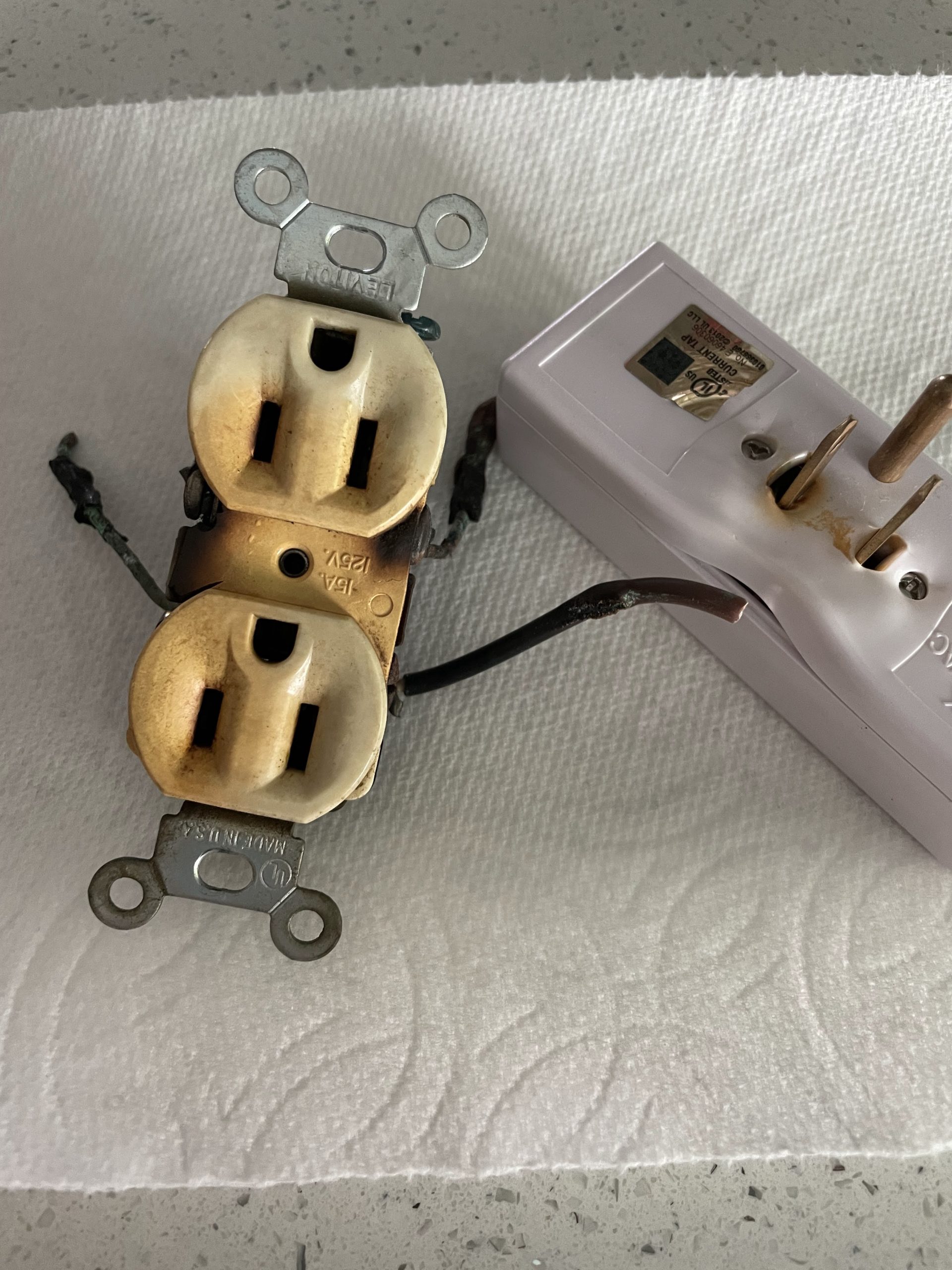
Electrical bananas
November 4, 2022
Volts divided by watts equals amps. I’ve learned that now, even though I wouldn’t know a watt from a volt or an amp, were one to suddenly jump out of a wall and bite me in the…
I’d learned this tidy bit of electrical math as a result of a fried electrical outlet. We don’t know how or when it happened, but what bothered me into a full on night sweat over it was that the frying didn’t cause the circuit breaker to trip. Evidently the volts divided by the watts in the frying of the outlet didn’t produce the amps required to trip the breaker. Believing there’s not much a circuit breaker can do to justify its value if it doesn’t trip when volts divided by watts equals kablooey, this led to some ineptly constructed Googling that nevertheless returned results that were not looking good. In addition to all the explanations for why a breaker might not trip when it should, one stood out: there was one brand of circuit breaker that had a reputation for quite frequently failing when volts divided by watts produced amps that should trip it. The manufacturer was no longer in business, no doubt because of that failure rate, and as it happens, those were the very breakers that adorned my two electrical panels. Plus, they might be as much as 50 years old.
There then ensued a parade of explanations, suspicions, advice, warnings and speculations from a cadre of electricians who left me with my volts divided by watts equalling applesauce. My anxiety level was amped, baby, and the breaker in my brain was tripping all right. I was looking at as much as five grand to replace both panels. Then what? If I was replacing breakers partly because they were old, what about the house wiring and all the outlets? Shouldn’t I be rewiring the entire house?
There then ensued a parade of explanations, suspicions, advice, warnings and speculations from a cadre of electricians who left me with my volts divided by watts equalling applesauce.
Things were clearly sparking out of control. What it all boiled down to was my fear that when the watts and volts conspired to produce an unsafe level of amps, the breakers wouldn’t trip. One of my electrical advisers suggested we create a short that would trip the breaker. If it did, then maybe this was all much ado about nothing. Well, it tripped. As to the fried outlet, I learned that that could have happened in such a way that the circuit breaker would not recognize what was happening. On its own, that was not all that reassuring, but at least it meant my current panels of breakers were probably off the hook, and we could spend that five grand on a trip to Portugal or wherever. (When we go, we’re unplugging everything in the house. Somehow that’s going to make us feel better, we think.)
Going forward, I’m operating under the if it ain’t broke, don’t fix it principle, which when it comes to electricity, may not be the safest principle to live by. When you don’t know a watt from an amp, ignorance may be bliss – or a hiss.
Just be ready for a shock, I suppose.
Sent from my Verizon, Samsung Galaxy smartphone



Be the first to comment